Speaker
Description
The fungal spores of the genus Alternaria and Cladosporium are among the most common causes of allergy reactions. Therefore, the investigation of changes in the pattern of spore seasons, along with their causes, is essential in the context of assessing future allergic risk. The main aim of the study was to determine the temporal variation in Alternaria and Cladosporium spore seasons in Poznań over 25 years (1996-2020) and indicate their possible causes as well as consequences for city residents. These analyses were performed based on: 1) the fungal spore data collected by the volumetric sampler of Hirst design located in the Poznań city centre, 2) local meteorological data, and 3) land use change data within 30km from the monitoring station. The annual sum of Alternaria and Cladosporium spores increased significantly (p<0.05) during the studied period (r2=0.51 and r2=0.38, respectively).
Similarly, the number of days with elevated levels of spores, i.e. 100 s/m3 for Alternaria and 3000 s/m3 for Cladosporium, also significantly (p<0.05) increased. The annual sums of spores were related to several meteorological parameters, for example positively with minimum June temperature and number of thunder days, and negatively with number of days with rain, fogginess and dew. This suggests that weather conditions have a clear effect on the intensity of the Alternaria and Cladosporium spore seasons. No clear impact of land use changes on spore concentration was observed. In summary, the increase in the fungal spore level in Poznań is presumably caused by the changes in climate during the last decades, although the impact of other factors such as changes in agricultural practices (e.g. fungicide uses, crop types, no-till farming) should also be taken into account and considered in further studies.

